At the Forum, German company, Witech, was showing a ‘wireless desk’. I remembered seeing something before from Fujitsu at CeBIT some years ago, and it seems that this was around five years ago. The company makes printed foils with inductive loops that can transfer up to around 50W per loop. The technology was shown powering a monitor, with the receiver in the base, a lamp, a WiGig dock and a notebook PC. The PC was sitting in a charging dock. Witech told us that it is also looking at including the antennas for WiGIG in the charging loops. The project is estimated to be around 18 months away from a possible commercial shipment, although there is no definite plan, yet. The company is working with Fujitsu but has no exclusive contract, so is open to discussions with others.
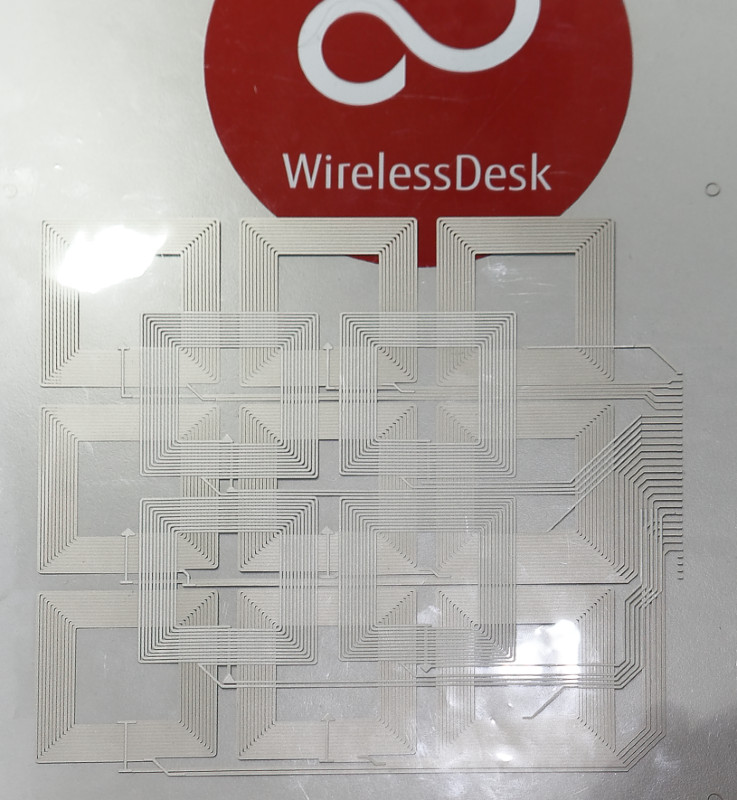 Witech is developing inductive Wireless Charging that can be low cost and deliver 50W per coil. Image:Meko
Witech is developing inductive Wireless Charging that can be low cost and deliver 50W per coil. Image:Meko
Fujitsu in Japan has developed an AR headset that we have been reporting on for a couple of years at the Forum and other events such as MWC. The headset was being shown, but the hardware is the same as before. There is news on the software front of the development of Fujitsu Amplify software technology which is able to take data from wearables and other IoT devices and process this through a rules engine. Applications include tracking the vital signs of users and other information, such as whether they may have taken a fall and automatically alerting management.
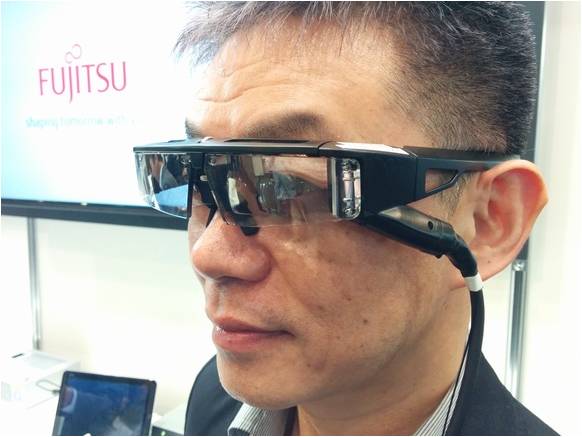 Fujitsu’s AR headset has improved software, but the hardware stays the same. Image:Meko
Fujitsu’s AR headset has improved software, but the hardware stays the same. Image:Meko
On display as a ‘technology demo’ is a Fujitsu headset that supports the Windows Mixed Reality platform. The headset has been released in Japan, so is a finished product, but no decision about whether to bring the product to market has been made in Europe, yet. Fujitsu in Europe left the consumer market some years ago and there is a feeling that this might be too much of a consumer product.
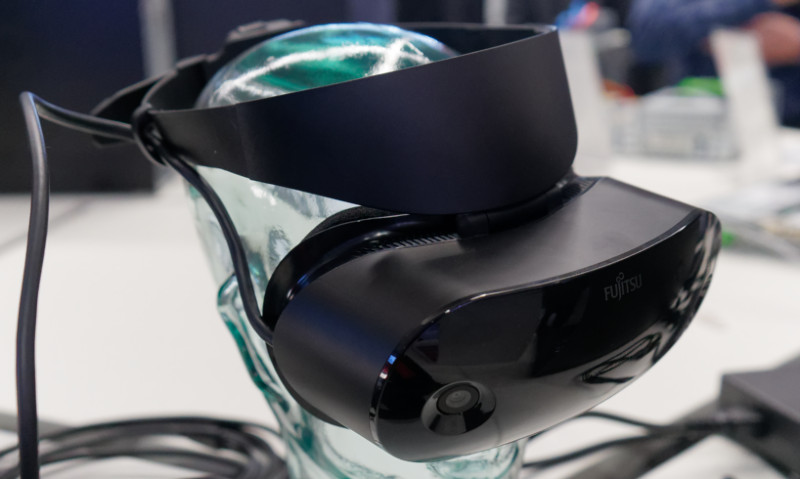 Fujitsu is offering a Windows MR headset in Japan, but no decision on Europe, yet. Image:Meko
Fujitsu is offering a Windows MR headset in Japan, but no decision on Europe, yet. Image:Meko
There were a whole raft of new notebooks. However, most were incremental updates of existing designs, that have been updated with the latest Intel 8th generation core processors. In some cases, there have been additional minor changes, such as the inclusion of USB Type-C connectors as well as Type-A.
There were two completely new PCs, the E548 and E458 which are 15″ and 14″ units that are new designs for the more budget conscious parts of the market. The designs of the new systems are based on the latest corporate standards and fit well into the family, visibly. The 4 Series is lower cost than the 5 series and loses some of the features such as the backlit keyboard and charging via USB Type-C. The 5 series can use either a dedicated dock via a special connector or a full Type-C dock with power and other connections, while the 4 Series can only use the lower function USB-type dock which uses, for example, DisplayLink technology to drive the display, rather than the DisplayPort Alt mode.
The E548 is available with a 14″ 1366 x768 (200 cd/m2) or 1920 x 1080 (220 cd/m2) display and a range of 7th and 8th generation Core processors. The E558 is a variant with 15.6″ displays with 1366 x768 (220 cd/m2, 500:1) or 1920 x 1080 (250 cd/m2, 700:1). The E458 and E448 have the same display options. They have Fujitsu’s palm recognition technology.
The company was showing a number of thin client devices including the Futro L620 which not only supports the Teradici technology for communications and can support up to four displays via DisplayPort. Dual 2560 x 1600 displays or quad 1920 x 1080 displays can be supported.
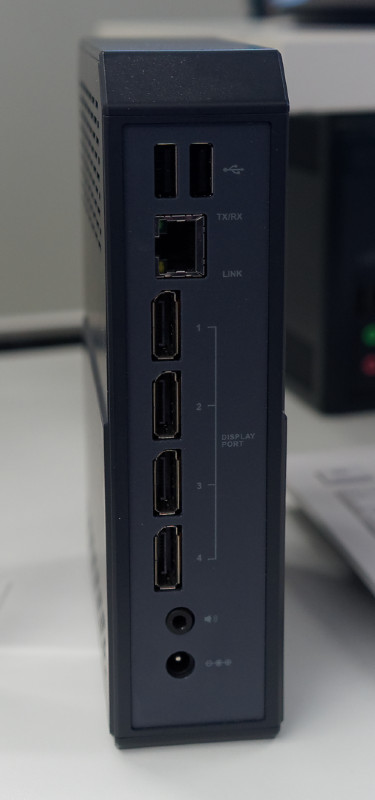 The Fujitsu Futro L620 thin client can support four displays. Image:Meko
The Fujitsu Futro L620 thin client can support four displays. Image:Meko
At one corner of the event was a configuration of 220 R726 tablets that were showing synchronised content of an UltraHD video. Each system had the video stored locally and playback was synchronised using Wi-fi. There was a lot of optimisation of the signalling to make it very standardised in order to keep message times very short and the displays were all synchronised to within 10ms. The video display was adjusted to compensate for the bezels and each tablet knew which part of the video it should display. The display won a Guiness Book of Records award for the most synchronised displays but is not intended as a product, just a technology demonstration.
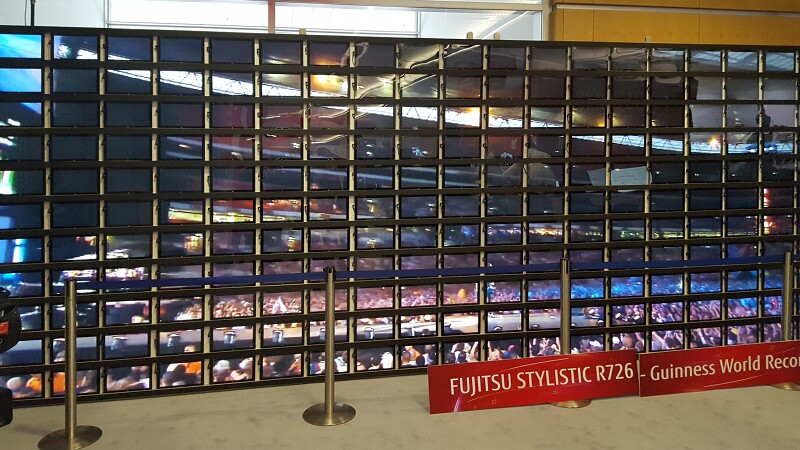 The tablet wall was synchronised. There is a gap between the panels to allow power connections on the edge. Image:Meko
The tablet wall was synchronised. There is a gap between the panels to allow power connections on the edge. Image:Meko
Last year, there was a new collaboration display from one of the Fujitsu companies in Scandinavia, and although we were told that it was at the event, somewhere, we couldn’t find it!

